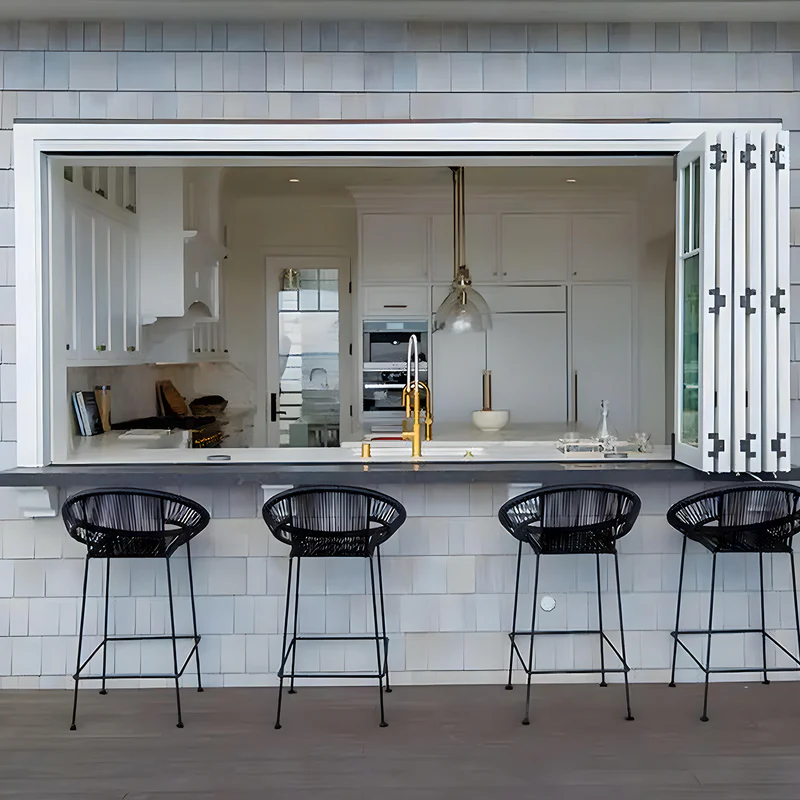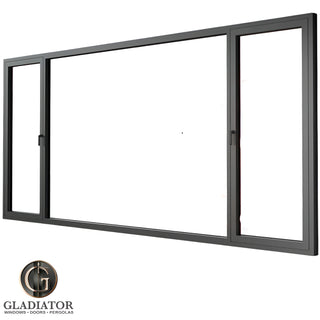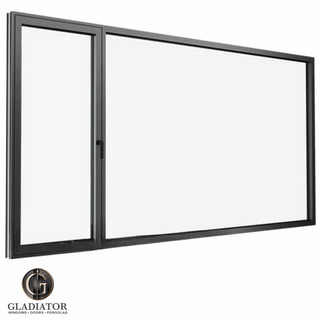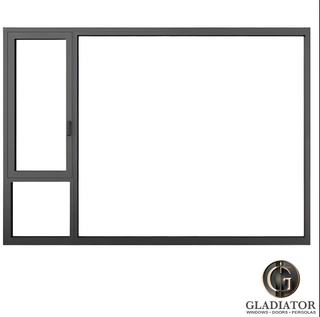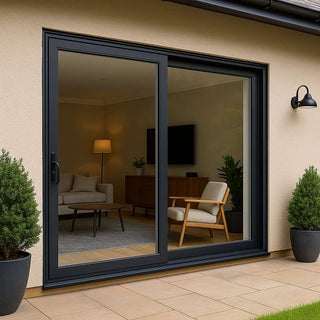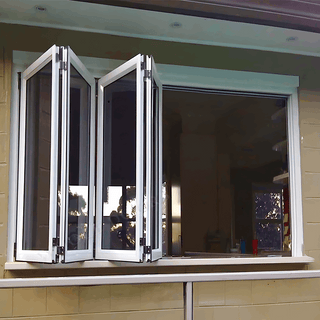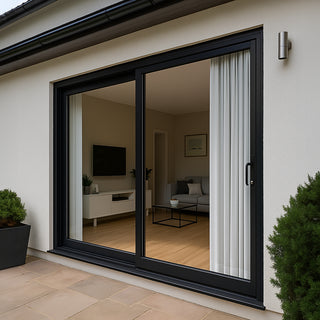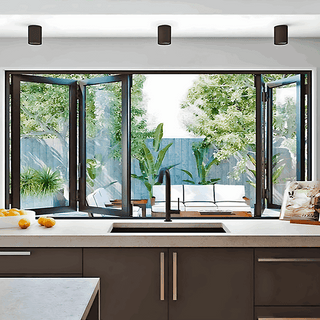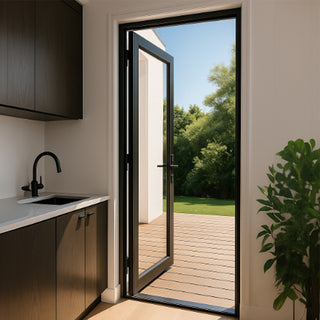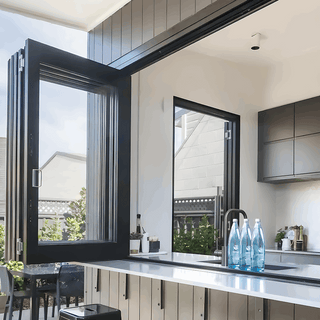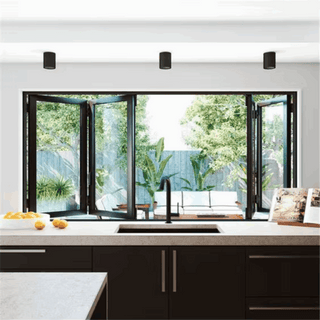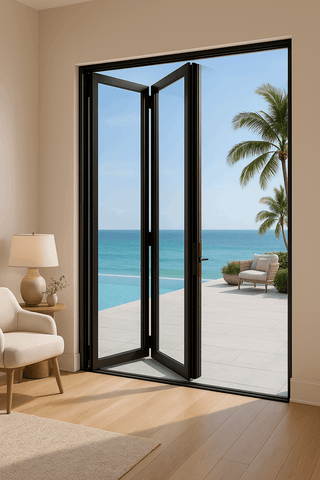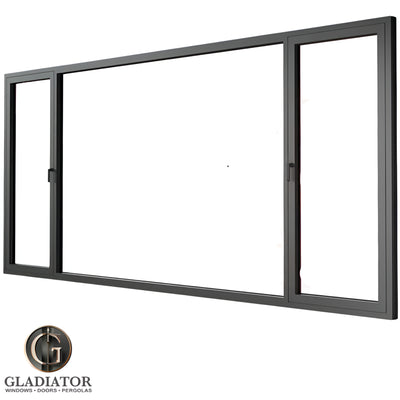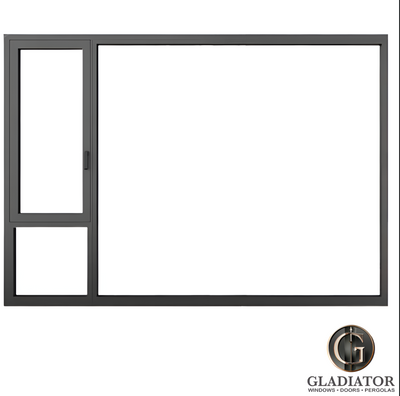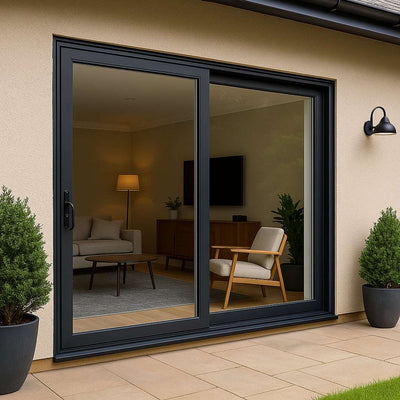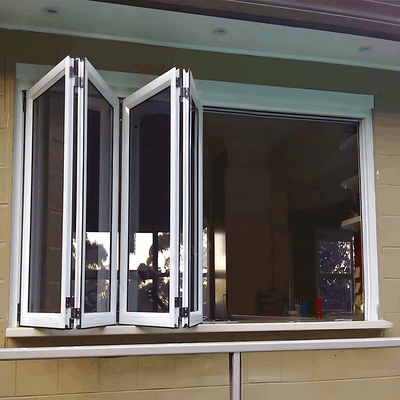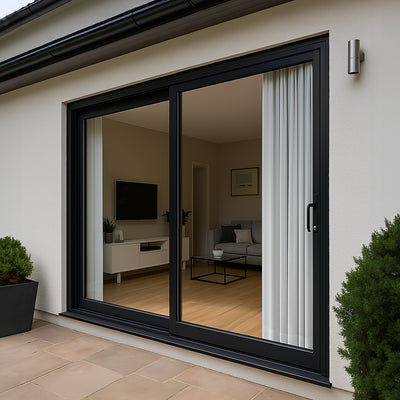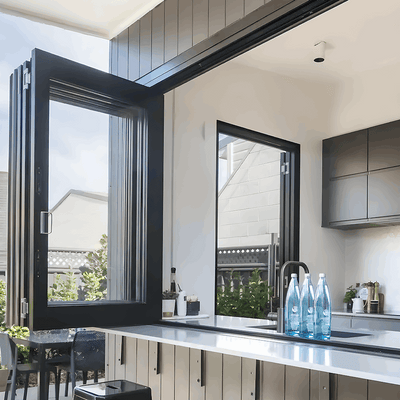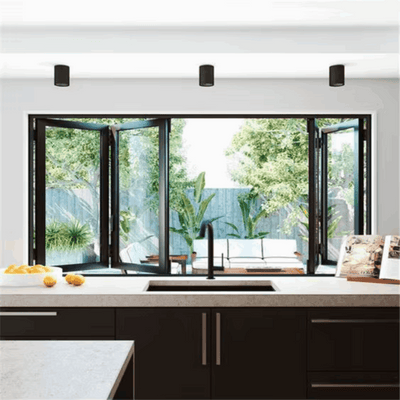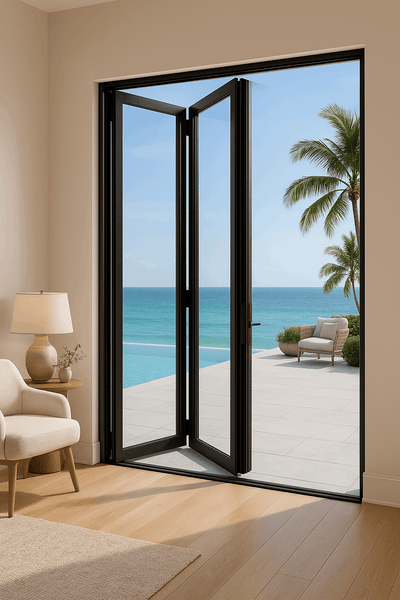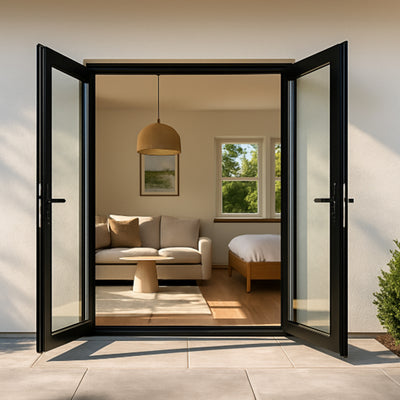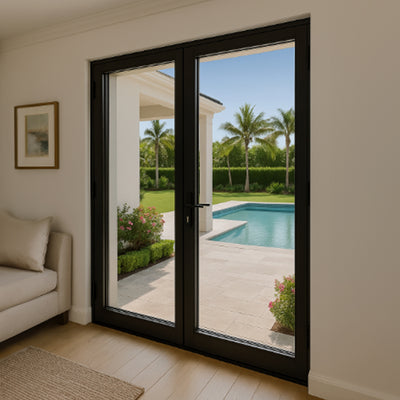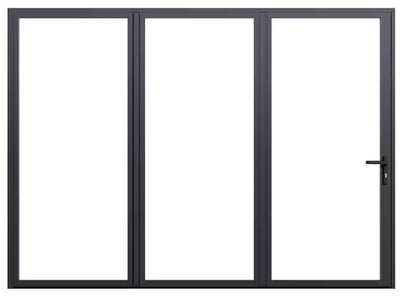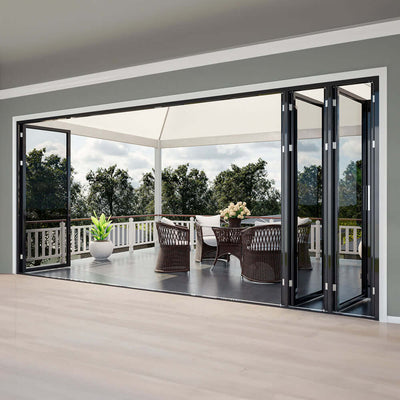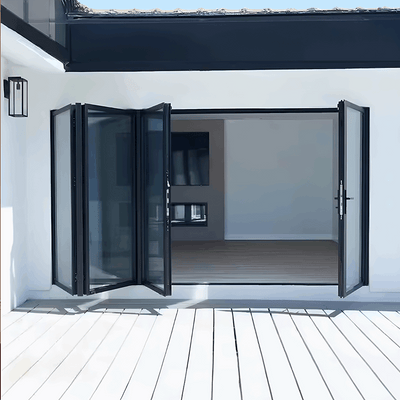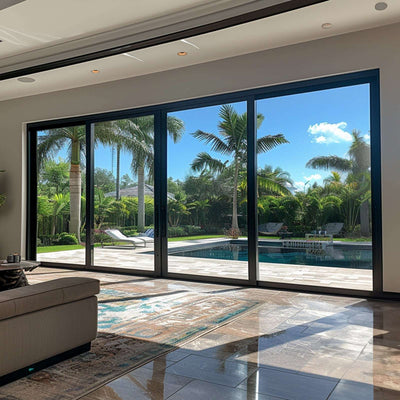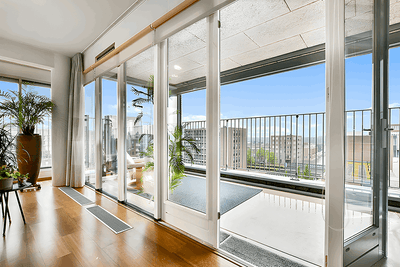Understanding Window Size Chart Fundamentals
Navigating window replacements can be tricky. One of the most important aspects is understanding window sizing. A window size chart, often provided by manufacturers like Gladiator Window and Doors, is essential for a smooth project. Just like knowing your clothing size, knowing your window dimensions prevents costly mistakes.
These charts clarify the difference between the rough opening, the actual window size, and the finished opening. Getting these measurements right isn't just about aesthetics; it's about function. Correctly sized windows operate smoothly, prevent drafts, and improve energy efficiency. For tips on dealing with drafts, check out this helpful resource: Top 8 Window Draft Solutions for 2025.
The demand for windows and doors is increasing alongside the growing construction market. The global window and door frame market, valued at $124.13 billion in 2024, is expected to reach $134.22 billion by 2025. This growth underscores the importance of standardized sizing provided by window size charts. Learn more about market growth.
Decoding the Chart
Understanding the components of a window size chart helps you make the right choices. The rough opening is the framed hole in the wall where the window will go. This measurement is key for contractors during construction.
The actual window size refers to the exact dimensions of the window unit itself, not including the frame. This is the measurement you'll use when ordering. The finished opening accounts for the trim and finishing materials around the installed window, ensuring a weathertight seal.
These different measurements, clearly laid out in a window size chart, prevent confusion and guarantee a proper fit. They work together to ensure accurate ordering and easy installation.
For example, a rough opening might measure 24x36 inches. The actual window size might be 23x35 inches, leaving space for installation and finishing materials. This interplay of dimensions is clearly defined on a window size chart.
Complete Window Size Chart By Style and Type
Choosing the right window size can seem daunting. However, understanding standard dimensions makes the process much easier. This guide offers a detailed window size chart referencing manufacturer specifications across various window styles. Knowing typical sizes is a crucial first step in any window project. For more on skylight sizing, check out this skylight dimensions guide.
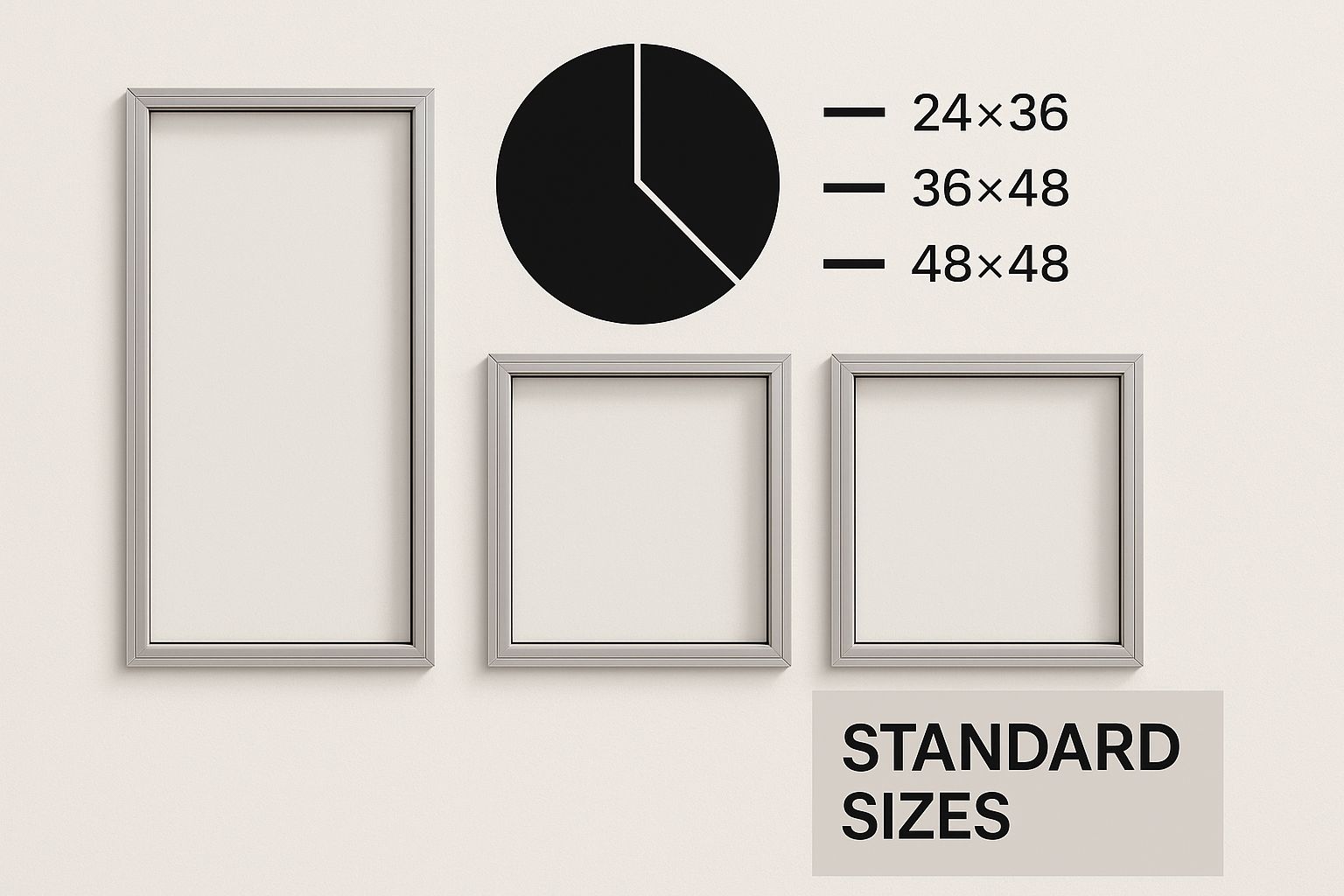
The infographic above illustrates common window sizes you'll often find in showrooms, giving you a visual representation of standard dimensions. Seeing these different sizes side-by-side helps you visualize how they might look in your home.
Standard Window Dimensions: A Breakdown by Style
Standard window sizes are often based on typical wall framing, which affects both price and availability. Let's break down the usual sizes for some popular window styles. For example, double-hung windows often come in set width and height increments, while casement windows offer a bit more flexibility. Knowing these differences helps you choose the perfect window for your needs.
-
Double-Hung Windows: These usually range from 24 inches to 48 inches in width and 36 inches to 72 inches in height.
-
Casement Windows: These offer more width options, from 12 inches to 48 inches wide. Their heights are generally similar to double-hung windows.
-
Sliding Windows: These windows slide horizontally and often have similar sizing to double-hung windows.
-
Awning Windows: Built for ventilation and weather protection, these windows have a wide range of sizes depending on where they're installed and their intended use.
-
Picture Windows: These are fixed-pane windows meant to maximize your view. Their sizing is often custom-made to fit specific architectural plans.
Knowing your preferred window style plays a big role in determining the standard sizes you'll find on a window size chart. This information helps you make informed decisions, ensuring the window style you choose meets your needs and looks great. Remember, regional preferences can influence available sizes, so local standards are worth considering. Plus, understanding these standards lets you explore specialty window dimensions if your project has unique design elements.
To make your selection process even smoother, we've compiled a handy reference table:
Standard Window Sizes By Window Type: This quick-reference chart shows standard dimensions across different window styles, including width ranges, height options, and the most common sizes. It also provides rough opening measurements for your convenience.
| Window Type | Width Range | Height Range | Most Common Size | Rough Opening |
|---|---|---|---|---|
| Double-Hung | 24" - 48" | 36" - 72" | 30" x 60" | 30 1/2" x 60 1/2" |
| Casement | 12" - 48" | 24" - 72" | 24" x 48" | 24 1/2" x 48 1/2" |
| Sliding | 36" - 84" | 24" - 72" | 60" x 48" | 60 1/2" x 48 1/2" |
| Awning | 12" - 48" | 12" - 48" | 30" x 24" | 30 1/2" x 24 1/2" |
| Picture | Customizable | Customizable | Varies | Varies |
This table provides a general overview. Always consult with a professional and check manufacturer specifications for precise measurements before finalizing your window choices. Exact sizes and rough openings can vary slightly between manufacturers.
Measuring Windows Like A Professional
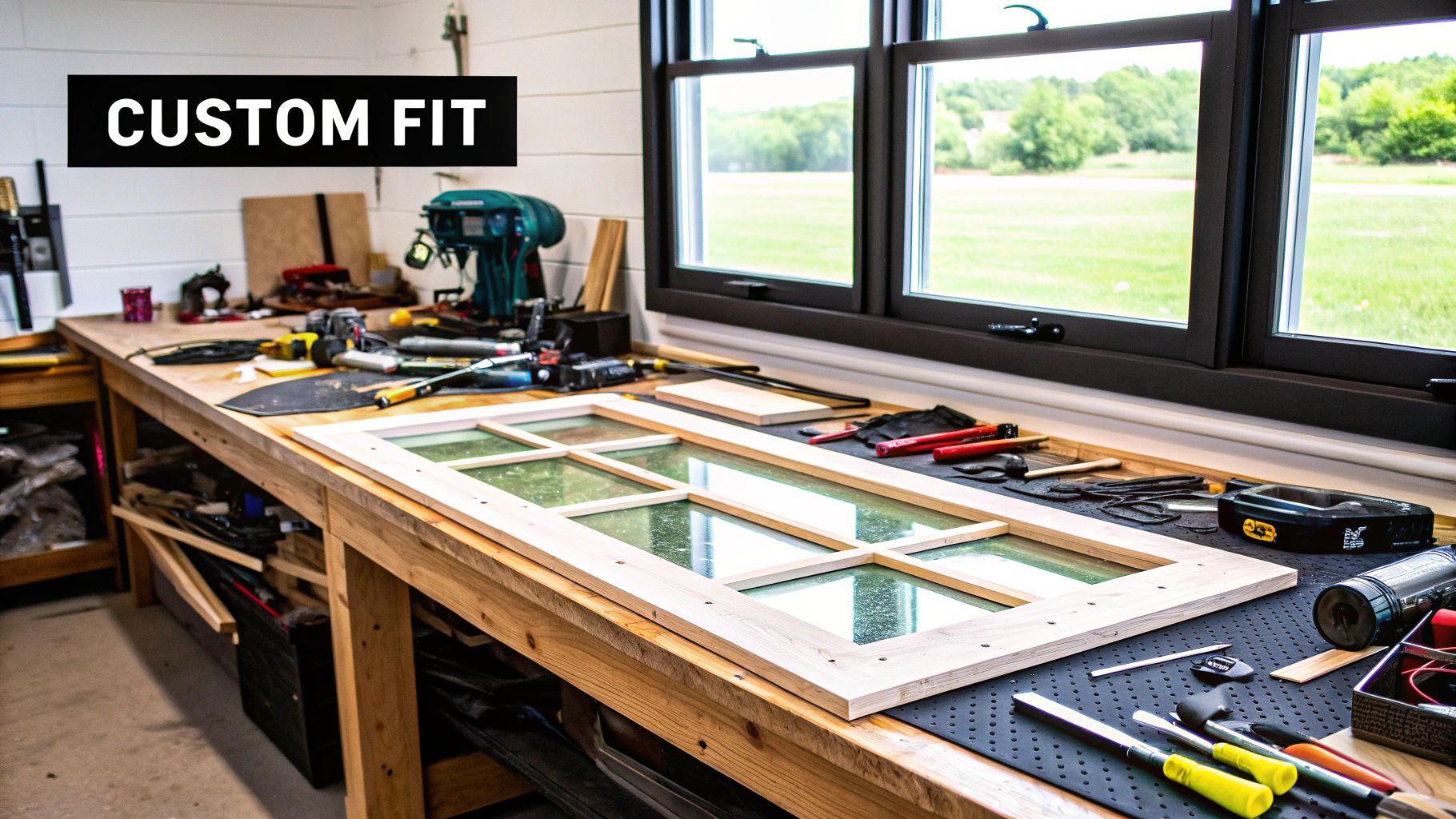
Getting your window measurements right is the first step to a smooth installation. This guide walks you through the process, ensuring a perfect fit and helping you avoid common mistakes. Let's start with the must-have tools.
Essential Tools
Having the right tools makes all the difference in accurate measurement. Here's what you'll need:
-
Tape Measure: A good quality retractable tape measure is a must for precise measurements.
-
Level: A small level will help ensure your measurements are plumb and level, which is especially important in older homes.
-
Pencil and Notepad: Use these to jot down your measurements and make notes about anything unusual about the window opening.
Once you've gathered your tools, you're ready to start measuring. If you're working with sliding glass doors, check out this helpful guide: How to Accurately Measure Sliding Glass Doors for a Perfect Fit.
Measuring for Different Installation Types
The way you measure depends on the type of installation you're doing.
For a full-frame replacement, measure the exterior dimensions of the existing window frame. Take the width and height at several points across the frame to account for any irregularities.
If you're doing an insert installation, where the existing frame stays in place, measure the width and height inside the existing frame. Precision is key here to ensure a snug fit.
For new construction, measure the rough opening, which is the framed hole in the wall. This measurement is essential for making sure the window fits the space. You'll often find this dimension on a window size chart.
Measuring Width, Height, and Depth
Taking accurate width, height, and depth measurements will ensure your new window fits perfectly.
When measuring width, measure at the top, middle, and bottom of the opening. Use the smallest of these three measurements. This prevents ordering a window that's too wide.
For height, measure the left, middle, and right sides of the opening. Again, record the smallest measurement to avoid a window that's too tall.
Depth is also important. Measure the thickness of the existing window frame, from the interior to the exterior. This measurement makes sure the new window sits flush with the wall.
Finally, always refer to the window size chart provided by the manufacturer for your specific window style. This chart gives standard dimensions and rough opening sizes. By combining your precise measurements with the manufacturer's chart, you'll be well on your way to a successful window installation.
Digital Applications and Modern Window Sizing
Window sizing principles are just as relevant in the digital world as they are in physical architecture. Screen dimensions, like physical windows, present their own set of sizing considerations. Architects and designers utilize Building Information Modeling (BIM) software, integrating principles from window size charts into their digital blueprints. Proper use of a window size chart begins with accurate measurements. Need a refresher on measuring? Check out this helpful guide: How To Measure For Blinds Your Expert Installation Guide.
BIM Software and Window Specifications
BIM software has changed the game for specifying windows. These tools enable precise window placement and sizing within a 3D model, leading to increased accuracy and fewer errors compared to traditional methods. This digital precision is especially valuable for projects involving numerous windows of varying sizes.
Imagine designing a large building with hundreds of windows. BIM software empowers architects to easily adjust window sizes and configurations, visualizing the results in real-time. This control simplifies the design and construction process, saving valuable time and resources. BIM software also integrates with manufacturer databases, providing access to the latest window size charts and specifications.
Screen Resolutions and Digital "Window" Sizes
The idea of window sizing also applies to digital interfaces. Screen resolution acts as the digital equivalent of physical window dimensions. As of May 2025, the most common screen resolution, 1920x1080, represents 8.37% of the global market share. Discover more insights. This data gives us a glimpse into the digital "window" sizes that designers and developers must consider when creating websites and applications.
Understanding screen resolution is key to optimizing user experience. Designers must ensure their designs are responsive and adapt to different screen sizes. Similar to the standardization of physical window sizes for efficiency, digital "window" sizes are taken into account for optimal display and usability.
Smart Window Technology and Sizing Considerations
Smart window technology is changing the way we approach window dimensions. Think automated systems, smart glass integration, and energy management—all influencing size requirements and installation. These advancements are impacting traditional window size charts, requiring adjustments from manufacturers and installers. You might be interested in learning more about the cost and smart home investment benefits of energy-efficient windows: Energy-Efficient Windows: Cost & Smart Home Investment.
Impact on Dimensions and Installation
Smart features sometimes require changes to standard window sizes. For example, integrated automated blinds might need a slightly deeper frame. Likewise, smart glass that tints electronically often requires specialized wiring and control systems, potentially affecting the rough opening. These modifications are key for smoothly integrating smart features into new or existing construction.
Early adopters of this technology have offered valuable feedback. They emphasize the importance of careful planning and collaboration between architects, contractors, and manufacturers. Accurate measurements and clear communication are vital for ensuring correct sizing, avoiding costly mistakes, and meeting aesthetic and functional goals.
Adapting Standard Sizes
The global smart window market provides valuable insight into how window sizing is changing, especially within the architecture and construction fields. These fields rely heavily on physical window size charts for commercial purposes. The architectural and construction segment, the largest in the smart window market, is projected to reach $2,372.40 million (USD) in revenue by 2025. This highlights the economic significance of window sizing trends in both new building designs and retrofitting projects, where dimensions are influenced not just by looks, but also by energy efficiency and smart tech integration. Discover more insights.
Manufacturers are adapting their standard sizes in response to these trends. Some offer new sizes specifically for smart windows. Others provide customizable options to accommodate the various needs of smart technology integration. This flexibility allows for more design freedom and ensures that smart features can be seamlessly incorporated into various architectural styles and project needs. Understanding these developments helps both homeowners and professionals make informed choices about their window investments. This allows them to future-proof their homes and buildings for the next wave of window technology. By keeping up with these changes, you can select windows that meet your present needs while adapting to future advancements.
Building Codes And Regional Sizing Requirements

Standard window size charts offer a good starting point, but building codes and regional requirements significantly impact your final window dimensions. These regulations ensure safety and energy efficiency. Understanding them is essential for a smooth and successful window installation. For a complete overview of window replacement, check out our Window Replacement Guide.
Key Code Requirements
Building codes address several crucial aspects of window sizing. Let's break down the key areas:
-
Egress Windows: These windows are designed for emergency exits and must meet specific size requirements. The minimum opening is usually 5.7 square feet, with a minimum width of 20 inches and a minimum height of 24 inches. These dimensions ensure a safe escape route in emergencies.
-
Energy Efficiency: Many regions enforce energy performance standards for windows. These standards influence window size and construction, impacting factors like glass type and frame insulation. Meeting these requirements can lead to long-term energy savings.
-
Safety Standards: Building codes often specify safety glass requirements, particularly for windows near walkways or high-traffic areas. These requirements can influence the glass thickness and type, indirectly affecting the overall window dimensions.
Understanding these code requirements before you start browsing window sizes will help narrow down your choices and ensure your project meets local regulations. This proactive approach can save you time, money, and headaches later.
Regional Variations and Climate Considerations
Regional climates significantly influence window sizing recommendations. Colder climates often favor smaller windows to reduce heat loss. Warmer regions, on the other hand, might benefit from larger windows to maximize ventilation and natural light.
For example, hurricane-prone areas often require impact-resistant windows. These windows usually have thicker glass and stronger frames, which can affect the standard dimensions. Similarly, regions with strict energy codes might encourage specific window sizes optimized for insulation and thermal performance.
Working With Local Authorities
Before ordering your windows, it's crucial to confirm the specific requirements for your area with your local building department. This early confirmation can streamline the permit process and prevent costly rework down the line.
Understanding local building codes ensures your project meets all applicable standards and regional sizing guidelines. This proactive engagement helps facilitate a smooth installation and avoids potential inspection issues.
The table below provides a simplified overview of regional window size requirements. Remember that these are just examples, and local codes can vary. Always consult your local building department for the most accurate and up-to-date information.
Regional Window Size Requirements By Application Code compliance reference showing minimum window sizes required for different room types and regional variations.
| Room Type | Minimum Size Required | Egress Requirements | Regional Variations | Energy Code Impact |
|---|---|---|---|---|
| Bedroom | Varies by region | Must meet egress requirements if designated as a sleeping room | Coastal regions may require impact-resistant glass | Window U-factor ratings may limit size in colder climates |
| Living Room | No minimum, typically dictated by design preferences | Not typically required | Hot climates may encourage larger windows for ventilation | Shading coefficients can influence size in sunny regions |
| Bathroom | Small windows common for privacy | Often exempt from egress requirements but must meet ventilation standards | May require obscure or frosted glass | Focus on minimizing heat loss in colder climates |
By understanding the information in this table and working closely with local authorities, you can ensure your window project is a success. Don't hesitate to contact your local building department for clarification or specific guidance regarding your project needs.
Essential Tools and Resources For Window Sizing Success
Getting your window sizes just right depends on having the proper tools and resources. This guide provides a practical toolkit for achieving window sizing success, from basic measuring tools to helpful digital resources and manufacturer-specific information. Don't forget local building regulations play a crucial role; for instance, the Dubai building codes outline specific requirements.
Must-Have Measuring Tools
Precision is key when measuring for new windows. Here are the essential tools you'll need:
-
Tape Measure: A quality retractable tape measure is fundamental. Look for one with easy-to-read markings and a locking mechanism to hold your measurement steady.
-
Level: A level ensures your measurements are plumb and square, which is especially important in older homes where settling may have occurred.
-
Angle Finder: For non-standard window openings, an angle finder is essential. This tool helps you accurately determine angles for custom window orders.
-
Pencil and Notepad: Always keep a pencil and notepad handy to meticulously document your measurements. Notes about any irregularities in the window opening can be incredibly helpful.
These basic tools provide the foundation for accurate measurements. Investing in quality versions will pay off by reducing the risk of costly mistakes down the line.
Digital Tools and Resources
Technology offers a wealth of additional tools to aid in window sizing:
-
Online Calculators: Many window manufacturers like Andersen and Pella offer online calculators that can simplify the sizing process. Simply input your measurements, and the calculator helps determine the correct window size.
-
Mobile Apps: Some mobile apps provide measurement and calculation tools, and may even interface with manufacturer databases. These apps can offer up-to-date information on available sizes and specifications.
-
Manufacturer Resources: Manufacturer websites are a goldmine of information. You can find detailed window size charts, installation guides, and technical specifications to help ensure you select the right window for your project. For example, you might find helpful information on energy-efficient windows from resources like Gladiator Window and Doors blog.
These digital resources provide convenient and accurate sizing solutions. Selecting the right tools for your skill level and project complexity will streamline the process and minimize errors.
Choosing the Right Resources
The best resources for your project depend on your individual needs:
-
DIYers: Online calculators and mobile apps can be great for simpler projects. However, always double-check your measurements and don't hesitate to consult with a professional if needed.
-
Contractors: For complex projects, professional-grade measuring tools, combined with manufacturer resources and potentially BIM software, are essential for precise sizing.
Choosing the right resources is crucial for project success. Accurate measurements and informed decisions minimize errors, ultimately saving you both time and money. Consider your project's scope and choose the tools and resources that best support your goals. Ready to explore new windows? Visit Gladiator Window and Doors for a free consultation and explore their selection of custom-made windows.









